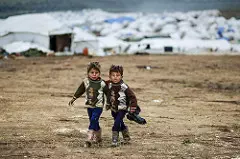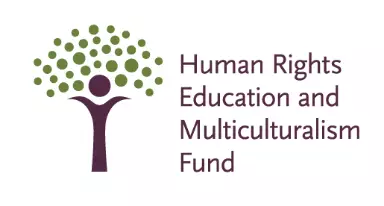
Donate to the Linda McKay-Panos Scholarship Fund

Donate to the Linda McKay-Panos Scholarship Fund
Photo: flickr/Freedom House
Canada fulfilled its commitment of providing humanitarian assistance to 25 thousand Syrian refugees in March 2016. This provides an opportunity to examine Canada’s actions to address the crisis in the context of the country’s legal obligations for the protection of refugees. This post suggests further measures to address refugee resettlement more effectively.

By Hasna Shireen and Nitin Kumar Srivastava
Canada fulfilled its commitment of providing humanitarian assistance to 25 thousand Syrian refugees in March 2016. This provides an opportunity to examine Canada’s actions to address the crisis in the context of the country’s legal obligations for the protection of refugees. This post suggests further measures to address refugee resettlement more effectively.
The Syrian Crisis
The conflict in Syria started in March 2011 and soon escalated into a full blown civil war. According to the UN estimate, over 250 thousand people have been casualties of this war. With the number of refugees fleeing the conflict to neighbouring countries passing four million, the United Nations High Commission for Refugees (UNHCR) has recognized the Syrian refugee crisis as the world’s single largest refugee crisis for almost a quarter of a century under its mandate. According to the July, 2015 UNHCR estimate, approximately 1.8 million of the refugees are in Turkey, 250 thousand in Iraq, 629 thousand in Jordan, 132 thousand in Egypt, 1.2 million in Lebanon, and 24 thousand in other North African regions. With more refugees leaving the Syrian regime daily, these numbers are increasing.
Life for Syrians in exile is very tough. Some 86 per cent of refugees outside camps in Jordan live below the poverty line of US$3.2 per day. In Lebanon, 55 per cent of refugees live in sub-standard shelters. This being the situation, the refugees are desperately seeking humanitarian assistance and resettlement.
Canada’s International and National Obligations to Refugees
Canada signed the 1951 United Nations (UN) Convention on the Status of Refugees on 4th June 1969. Canada recognized its obligations for refugee protection not merely as a humanitarian gesture but also a legal requirement as a signatory state of the Convention. The country’s national obligation to ensure refugee resettlement is protected under the Immigration and Refugee Protection Act, SC 2001, c 27.
Refugees are different from immigrants because they are forced to flee their homes and do not choose to immigrate. Unfortunately, until 1976, Canada treated refugee claims in a similar manner to other immigration claims. The Immigration Act 1976 introduced the new refugee class and distinguished refugee claimants from other immigration applicants and also recognized refugee resettlement as a legal right. Judicial interventions further acknowledged rights of the refugees. In its landmark decision of Singh v Minister of Employment and Immigration, 1985 SCC 65, the Supreme Court of Canada (SCC) confirmed the availability of the basic rights for the refugee claimants under the Canadian Charter of Rights and Freedoms. Recently in Kanthasamy v Canada (Citizenship and Immigration), 2015 SCC 61, the Supreme Court extended the scope and definition of ‘humanitarian and compassionate grounds’ to include the best interests of a child directly affected under the Immigration and Refugee Protection Act, SC 2001, c 27 .
The Legal System in Canada to Support its Obligations to Refugees
The Part 2 of the Immigration and Refugee Protection Act provides the framework for refugee resettlement. Refugees can be resettled in Canadian soil under either of the following programs:
Refugee and Humanitarian Resettlement Program
Refugee applicants from outside of Canada can be resettled under this program by the following three ways:
Refugees acknowledged by the UNHCR (known as the Convention Refugees) are eligible for this program. The Government of Canada is responsible for the initial settlement (for up to one year) of these refugees through the Resettlement Assistance Program. The UNHCR or other organizations can make referrals for resettlement under this program.
A Group of Five (G5) or Community Sponsor (five or more Canadian citizens or permanent residents) can sponsor refugees under this program. Prior to sponsoring, the groups have to sign agreements with the Government of Canada to be eligible as Sponsorship Agreement Holders (SAH). A G5 may only sponsor applicants recognized by the UNHCR or other organizations and will be financially responsible for the resettled refugees up to one year.
The BVOR Program matches refugees identified for resettlement by the UNHCR with private sponsors in Canada. The goal is to engage in a three-way partnership among the Government of Canada, UNHCR, and private sponsors. The Government of Canada will generally provide up to six months of income support through the Resettlement Assistance Program while the private sponsors will be responsible for financial support for the other six months of the initial year.
Recent Canadian Measures to Address the Syrian Refugee Crisis
The Canadian government made a commitment to resettle 25 thousand Syrian refugees by February 2016 under the GAR Program. In this regard, the Government introduced an Accelerated GAR process. Since September 19, 2015, the Government of Canada temporarily exempted Syrians from the requirement to provide proof of refugee status (i.e., recognition by UNHCR or other organizations) in order to be sponsored. In addition, Accelerated PSR and Accelerated BVOR policies were introduced in February 2016 to expedite the Syrian refugee applications. Moreover, the Refugee Sponsorship Training Program (RSTP) was launched to educate the potential private and community sponsors on refugee eligibility criteria, admissibility and the application process.
As of March 8, 2016, more than 26 thousand Syrian refugees have arrived in Canada following the security and health screening processes—approximately 15 thousand were settled under the GAR program, nine thousand under the PSR program, and the remaining refugees under the BVOR program.
The majority of the GAR refugees are planned to resettle in 36 cities across Canada where Resettlement Assistance Programs (RAP) exist to provide immediate specialized service (See: Destination Communities). In addition, the Community Partnership Settlement Plan (CPSP) jointly launched with local communities will provide resettlement support and services.
Comments on Canada’s Response
Canada’s actions for Syrian refugee resettlement have many praiseworthy aspects. First, the exemption from the individual status determination process (by the UNHCR/other organization) allowed the Syrian refugees outside their country to be automatically considered as refugees, which provided access by a larger fraction of Syrian refugees to the resettlement application process. Second, the modified GAR, PSR, and BVOR programs accelerated the application process to resettle the refugees more quickly and efficiently. Finally, the Government initiatives (RAP, CPSP) are great resources to provide services and assistance to the resettled refugees.
Regardless of these commendable efforts, over four million Syrian refugees remain in desperate need of humanitarian assistance for resettlement. The Canadian Council for Refugees (CCR) argues that Canada has more potential to offer support. Germany’s commitment for resettlement of 41,216 refugees can be cited as exemplary in this regard. According to the UNHCR (Mid-Year Trends, June 2015) Canada has a very low refugee per capita rate (about four refugees per 1000 population) compared to the rate in a number of countries.
However, there are legal, security and employment concerns associated with the resettlement process. Although every refugee application has to go through a complete security screening process, the Immigration Refugee Board (IRB) is allowing ‘external parties’ to report potential security risks in its proceedings (Identification of Potential Security Risk), which may prolong the refugee application process.
There is a concern that the one-year support period may not be adequate to assist the resettlement of refugees. Additional support programs will be required for the education, training and employment of refugees; these are currently missing in the resettlement framework.
Currently the refugee application process is unfavorable for young single male refugees, which is inconsistent with Canadian Charter values. This can also prove to be dangerous as young single males are most vulnerable to the forced recruitment by armed groups in Syria. However, Canada’s national security is of utmost importance. The right balance needs to be maintained between humanitarian efforts and security measures. Perhaps Canada will want to reconsider this blanket policy when our current efforts to resettle refugees resume.




2500 University Drive NW
Calgary, AB T2N 1N4
(403) 220-2505
aclrc@ucalgary.ca